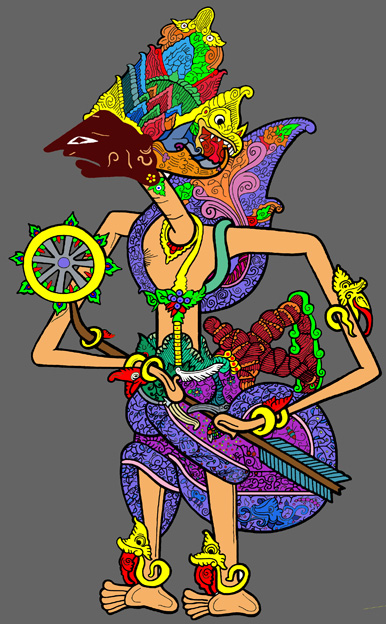



















| |  | Ravi Ravi felt unwell at lunchtime, and decided to go home. He called his wife Nita to say that he would leave soon. He was principal of a large business school in Jakarta - a demanding job at the best of times, and particularly stressful today. He was driven home by a concerned colleague, and sitting in the back of his car Ravi soon drifted into sleep, his head slumped forwards. Close to home, the driver said "nearly there…", but there was no response. Pulling in through the already-opened gate of the house, the car came to a stop and the driver got out, turning to open the rear door. Nita came out to greet them. The driver tried to rouse Ravi, repeating his name and saying "you’re home now", but still with no response. With growing anxiety and desperation, they tried to waken Ravi, but neither they nor the ambulance crew then summonsed to help were able to restore any signs of life. Ravi and Nita were Buddhists, and according to tradition and his status in the local community, Ravi was laid in state at the nearby Buddhist temple. This would continue for a week before Ravi’s body would finally be transported by a procession to the crematorium on the other side of the city. Two of their sons lived in America, so it would take several days before the whole family could be together. In keeping with tradition, family and friends kept a vigil beside the coffin day and night, as a stream of people came to pay their respects. We joined this group on the first evening - Ravi had been a family relative. Each visitor would bring food and drink to share with the other mourners, and then sit under the awnings put up in the temple garden as they discussed this sudden and unexpected loss. Ravi had been a comparatively young man. Each mourner said goodbye to Ravi according to their religion and their own memories of him.
| As the days and nights moved slowly by, Nita remained awake and very active, greeting everyone who came, making complex arrangements for the cremation, perhaps to distract her from thinking too closely about what had happened. One night towards the end of the week she was exhausted, but still unable to rest. "He’s still with us", she said "he’s trying to break free but he is trapped down here", and she broke down. We helped her outside into the temple garden, now for the first time empty apart from us, and sat on some stone steps, looking up at the Moon and stars in the cloudless sky. We tried to comfort Nita as she sobbed, and gradually the tension in her body began to ease. She began to ask questions - difficult questions about life, the universe, and our part within it. As the hours went by we discussed everything that had meaning for us, each in our own way, according to how we saw the world. Art, belief, science, and literature were all there, although to our tired minds beneath the night sky they were no longer in their neat compartments, but swirled and interacted and gave meaning to each other. The sky in the east was beginning to lighten, and the first calls to prayer were beginning to sound from the mosques of Jakarta when Nita said with evident relief "he’s gone…"
| 
| | How can life be there one moment, and gone the next? Biology is the study of life, that elusive quality that distinguishes the living from the non-living. Intuitively, we do not have too much trouble deciding what is alive and what is not, and given the scope and power of modern biology you might imagine that biologists have life pretty well ‘understood’. To be sure, we now have access to almost unimaginable quantities of information about living systems - biological knowledge seems to be growing at an exponential rate these days and is already much greater than any single person alive today could look at, let alone make sense of. And yet, can we be sure that the essence of life has been captured by all this effort and endeavour? Even our best-fit explanations are still pretty much at a loss to explain the everyday experience of feelings, consciousness, the miracle of development in seeds, chickens and babies, and the way that the life of a loved one can ebb away before our eyes. Most dictionary and textbook definitions of life list properties such as metabolism (chemical processes), growth, responsiveness, and reproduction as the key distinguishing features. Others draw attention to the incredible complexity of living things, apparently organised in layers from atoms and molecules through cells to organs and body systems to the whole person, and the role of our genetic heritage in setting up this complexity. These definitions tend to promote a rather mechanistic view of life, implying that life can be best explained as matter organised in a complex way. Not all biologists are satisfied with this unquestioning acceptance of materialism, and some write more poetically about the essence of life: "What happened to living matter to make it so different? The answer is both scientific and historical. Life is its own inimitable history. Life is the representation, the "presencing", of past chemistries, a past environment of the early Earth that, because of life, remains on the modern Earth. It is the watery, membrane-bound encapsulation of spacetime." (Margulis and Sagan, 1995, 'What is life?')
We shall try to keep an open mind about the nature of life as we look at some of the evidence in the pages that follow. Next step... 
|
   
|
